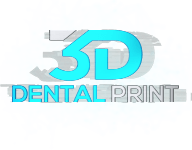Implant planning and 3D printing for dentistry
The highest level of precision and control
„Correct planning of implant position is the basis of surgical guide design”

Krzysztof Chmielewski, DDS, MSC
Master of Science in Oral Implantology
ITI Fellow



Computer navigation
- Perfect plan execution
- Optimal drilling axis
- Full and partial osteotomy
- Implant insertion

Benefits
- Security
- Precision
- Comfort
- Time

Why us?
- Knowledge
- Experience
- Support
- Technology
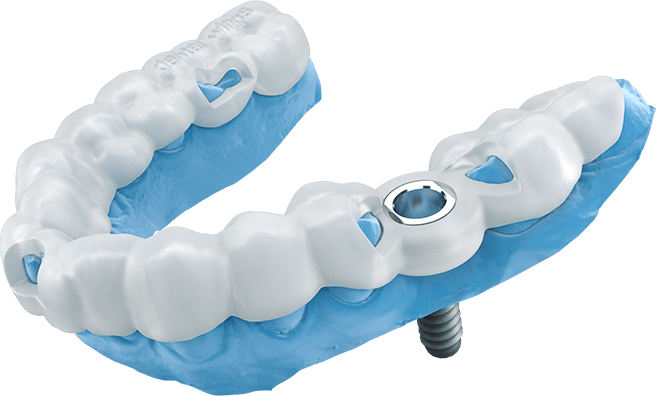
Implant planning and 3D
full navigation surgical guide
Implantation under complete navigation allows for making full control osteotomy in terms of depth, diameter, preparation axis and insertion of implant through surgical guide which guarantees the best possible precision.
Types of guides
Guides based on the teeth
Single absence - late implantation
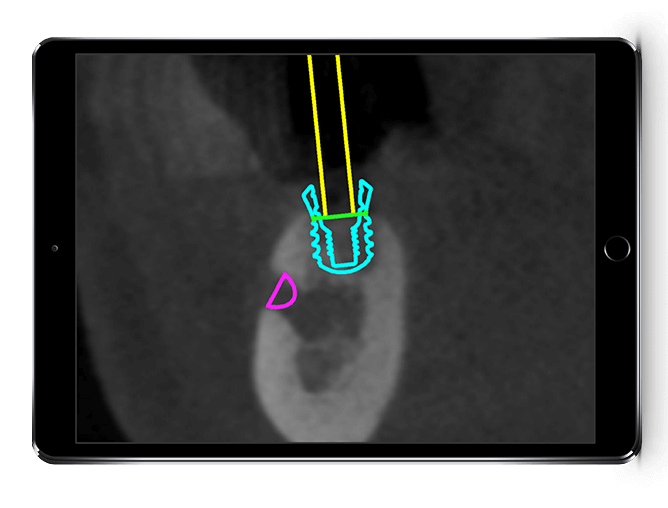
Filling in the single tooth absence are one of the most common indications for implant treatment. Navigation guides in such indications are usually based on the neighboring teeth. Length and span of the guide is dependent on the curve of the dental arch.
Single absence - immediate implantation
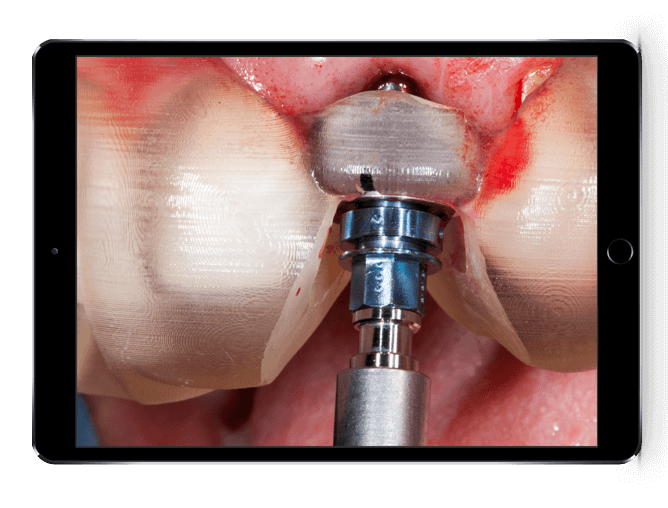
Immediate implantation requires the preparation of surgical guide before the tooth is removed. In order to make such guide, dentist has to deliver plaster model or intraoral scan where the tooth destined for extraction is marked. In the process of planning and designing the guide, model scan or intraoral scan with virtually removed tooth shall be used.
Quadrant absence with both dental and mucosal support
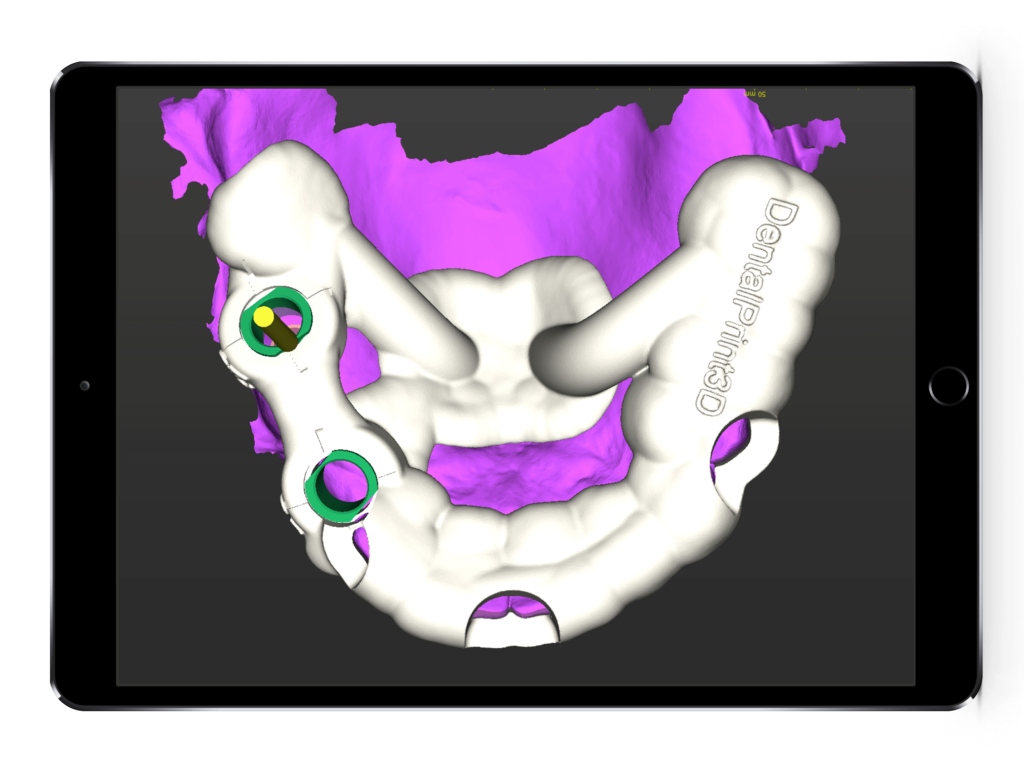
Such construction in case of quadrant losses, specifically in mandible, is the best. The additional supports such as „support legs”, which are selectively resting on the uncovered part of alveolar ridge, are being planned. This increases the stability of the guide and thus increases the precision of preparation and insertion of implant, mostly because of greatly reducing the bending potential of the guide.
Edentulous guides
Toothless maxilla
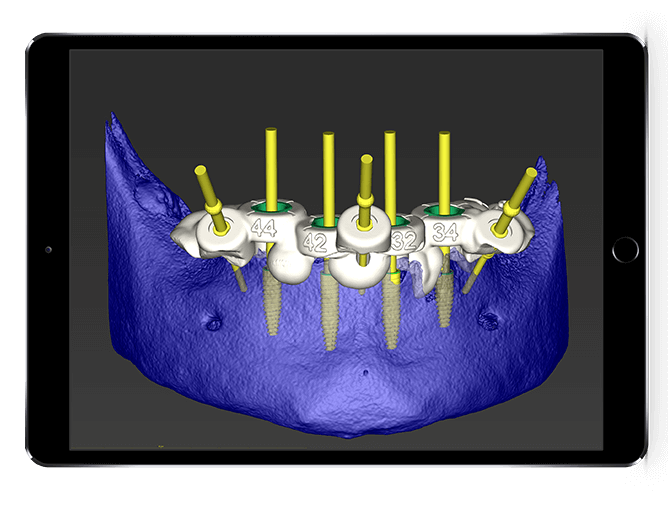
Edentulous guides for maxilla can be fixed on mucosa, directly to the bone or can have mixed support with additional bone stabilization. The requirement for obtaining the highest precision is very meticulous seating and fixation of the guide.
Toothless mandible
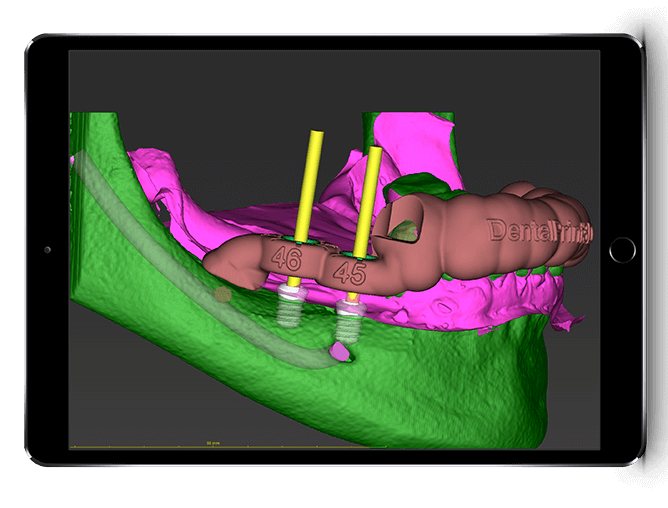
Edentulous guides for mandible can be fixed directly to the bone or have mixed support, both on mucosa and to the bone with additional bone stabilization using retention elements such as temporary pins and screws.
Edentulous with bone reduction
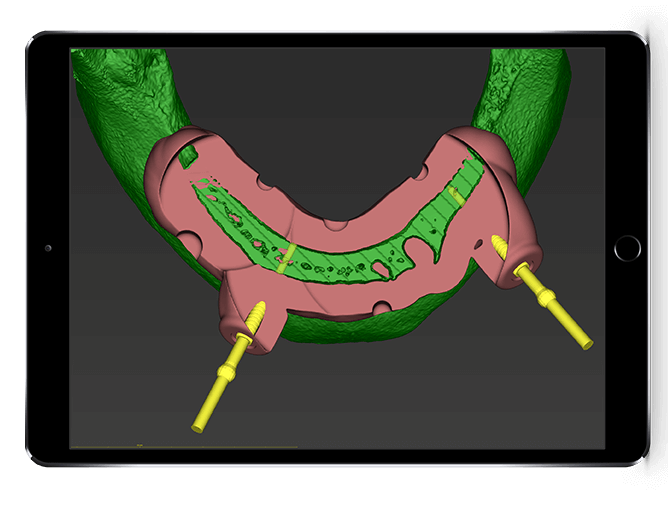
Guides designed for bone reduction require very meticulous planning. They are often used to perform alveolar ridge reduction vertically, mostly in the front section of maxilla or mandible.
Reduction guides
Guides for pilot drills
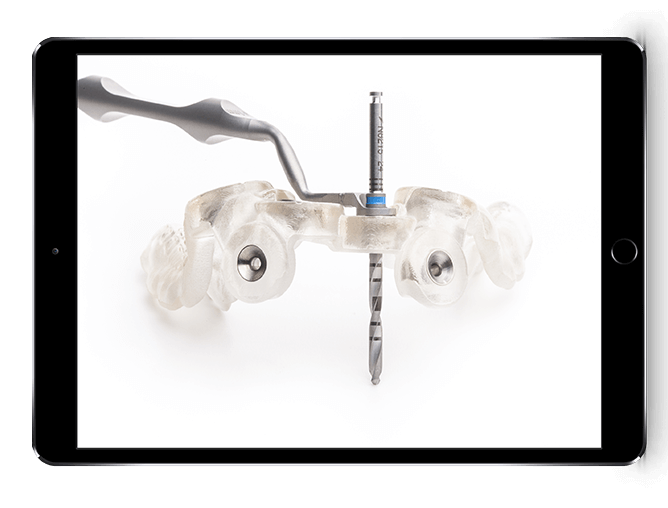
Pilot dill guides enable easy designation of the optimal drilling axis for each of the following drills used for developing the final implant bed. Knowing the diameter of pilot drill, one can select optimal sleeve size, which embedded into the guide, shall prevent the guide walls from cutting and out-of-control cramming into the wound.
Guides for full osteotomy
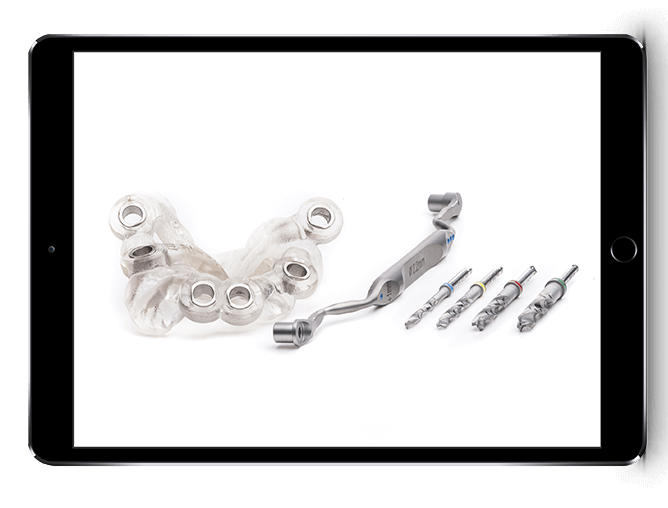
These guides enable bone reduction for the targeted implant size. They are most often linked with dedicated computer navigation set produced by the implant manufacturer. Knowing the implant diameter, there is also an option to adopt the universal sets developed by independent manufacturers.
Complete navigation guides
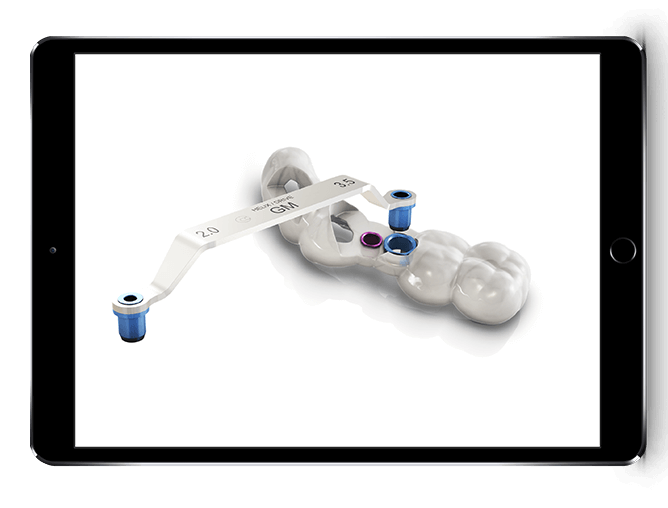
Guides for complete navigation are used for full osteotomy and implant insertion. The best solution is using dedicated surgical guide sets for computer navigation offered by the genuine manufacturer of given implant system.
Cooperation
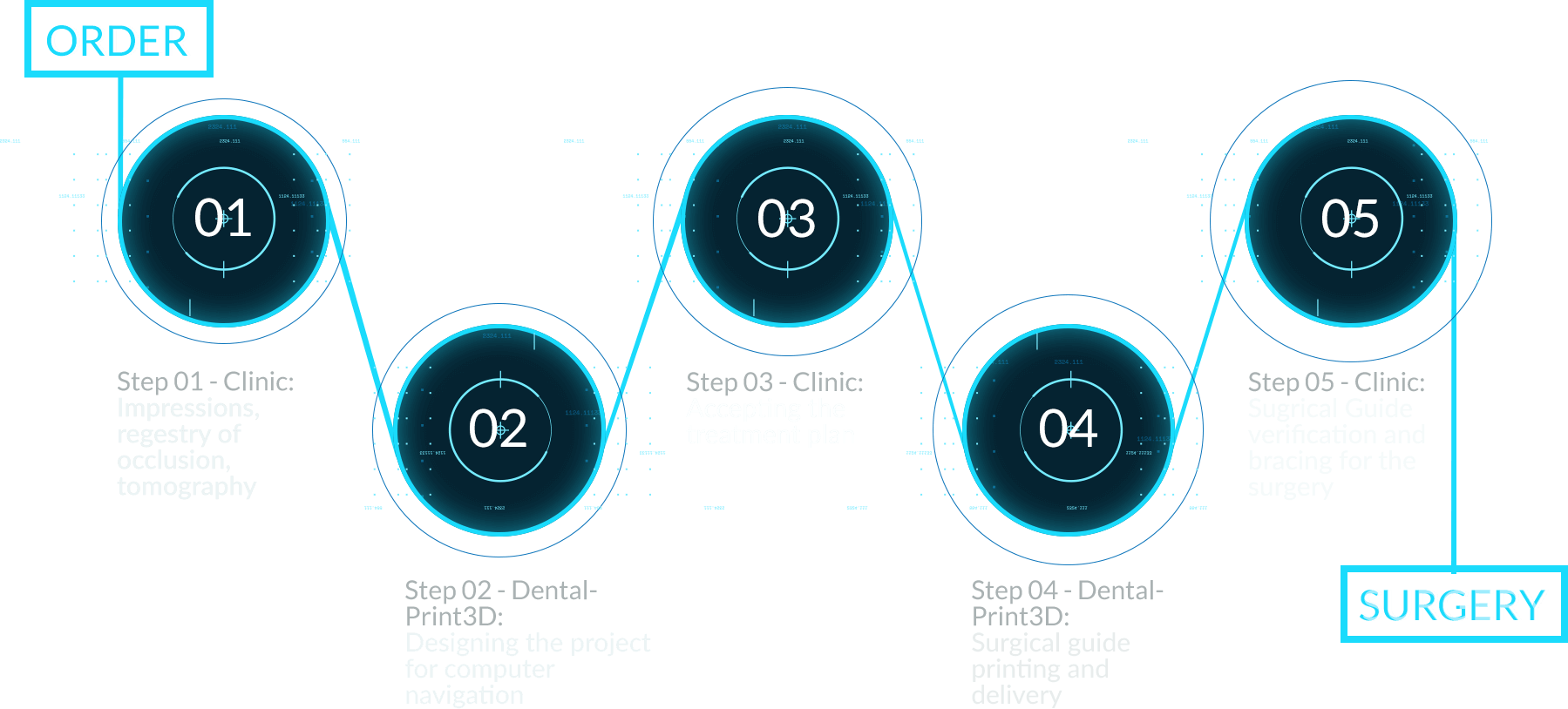
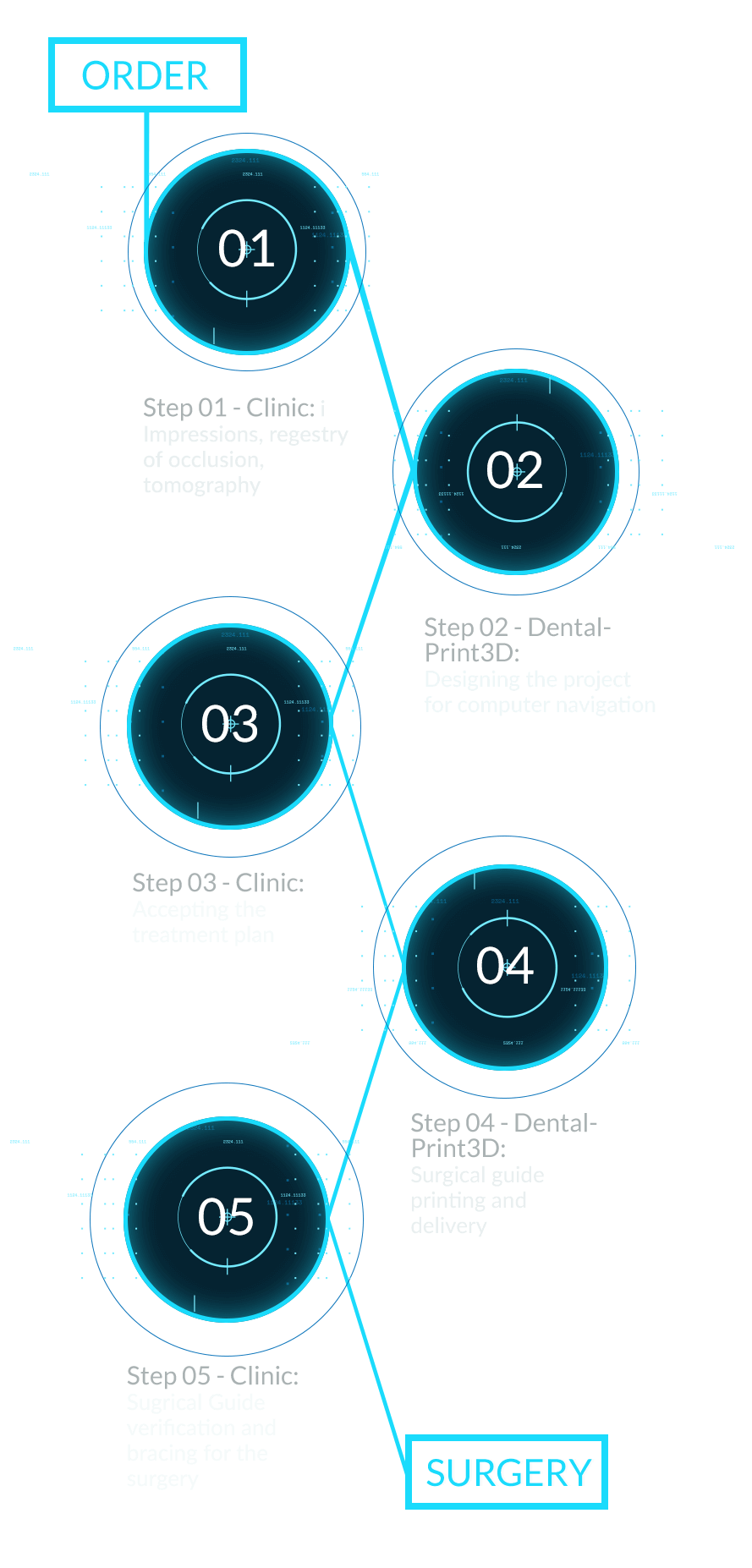
Implant library
Opinions
For more opinions check out out Facebook page here:
https://www.facebook.com/pg/dentalprint3d



